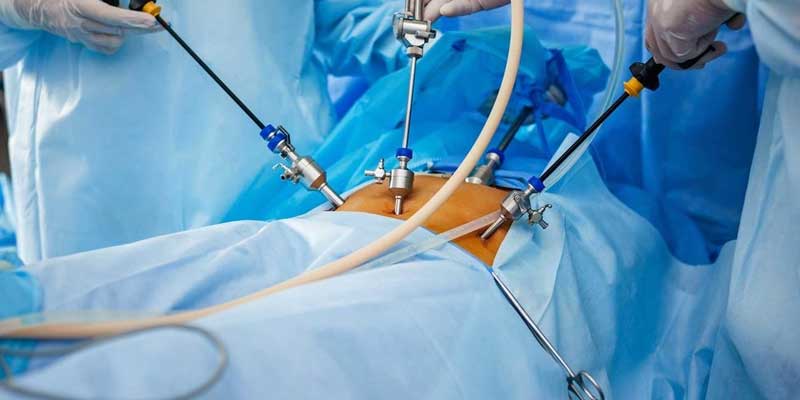- drmanojgaddikeri@gmail.com
- Wockhardt Hospital, Mira Road
- For Appointments Call: +91-22-40543000

Back pain, especially due to conditions like herniated discs or spinal stenosis, can significantly affect your quality of life. Endoscopic spine surgery may be the answer if you’re seeking a minimally invasive solution to these issues. Dr. Manojkumar Gaddikeri, a highly skilled orthopedic spine surgeon, offers cutting-edge endoscopic techniques that help patients achieve lasting pain relief with reduced recovery times.
What is Endoscopic Spine Surgery?
Endoscopic spine surgery involves the use of an endoscope, a small, flexible tube equipped with a camera. The endoscope provides a magnified, illuminated view of the spinal structures on a large screen, allowing the surgeon to perform precise procedures with minimal disruption to surrounding tissues. This method is ideal for treating spinal issues without the need for large incisions or significant muscle disruption. Many endoscopic spine surgeries can even be performed under local anesthesia, allowing for a quicker recovery and the possibility of same-day discharge.
Types of Endoscopic Spine Surgeries
Endoscopic spine surgery is a versatile treatment option, suitable for a range of spinal conditions. Here are some of the most common procedures:
1. Endoscopic Discectomy
A lumbar disc herniation is a leading cause of back pain, often pressing on the nerves and causing discomfort. In an endoscopic discectomy, only the herniated portion of the disc is removed, which helps alleviate the pressure on surrounding nerves. There are two main approaches:
Both methods are effective in relieving pain while minimizing the risk of complications and reducing recovery time.
2. Endoscopic Spine Decompression
For patients suffering from lumbar spinal stenosis, where the spinal canal narrows and compresses the spinal cord or nerves, endoscopic spine decompression can provide significant relief. This procedure uses a wider endoscope to remove tissue that is putting pressure on the spinal cord or nerves, such as the ligamentum flavum, overgrown facet joints, or herniated discs. By restoring the space within the spinal canal, this surgery helps improve mobility and reduce pain.
3. Endoscopic Lumbar Fusion
In more severe cases of disc degeneration or instability, endoscopic lumbar fusion may be recommended. This procedure begins with a complete endoscopic discectomy to remove the damaged disc. A bone graft or cage is then inserted into the intervertebral space, followed by the placement of percutaneous pedicle screws to stabilize the spine. The minimally invasive approach minimizes muscle disruption, leading to a faster recovery time and reduced surgical risks.
4. Posterior Cervical Endoscopic Discectomy
When dealing with issues in the cervical spine (neck), a posterior cervical endoscopic discectomy can be a highly effective treatment. This procedure uses a smaller endoscope to remove the herniated part of the cervical disc through a posterior micro-foraminotomy approach. This technique avoids the need for a full anterior discectomy and fusion, making it a less invasive option for treating laterally herniated discs.
Other Endoscopic Spine Procedures
Endoscopic techniques can also be used for various other spine-related issues, such as:
Why Choose Endoscopic Spine Surgery?
Endoscopic spine surgery offers numerous benefits over traditional spinal surgery, including:
With its ability to target specific issues within the spine with minimal disruption, endoscopic spine surgery provides an excellent solution for those seeking effective, minimally invasive treatment for back pain.